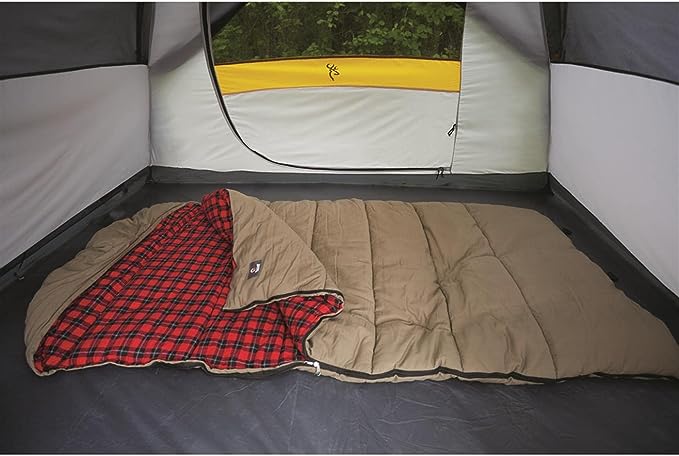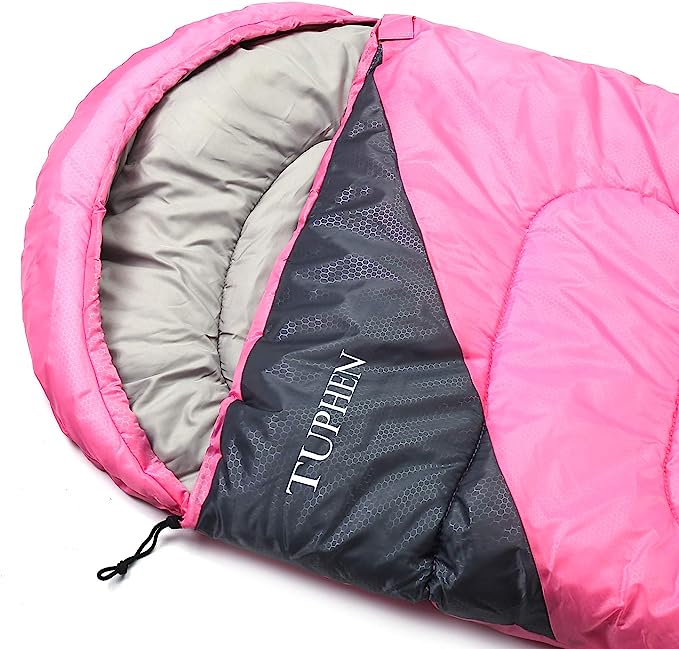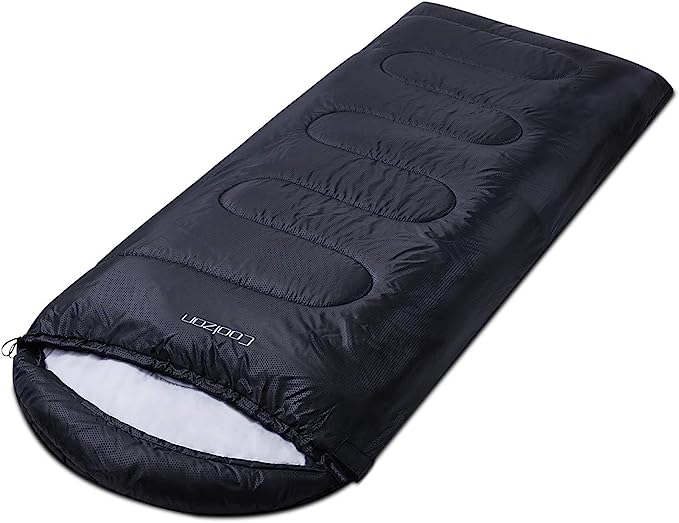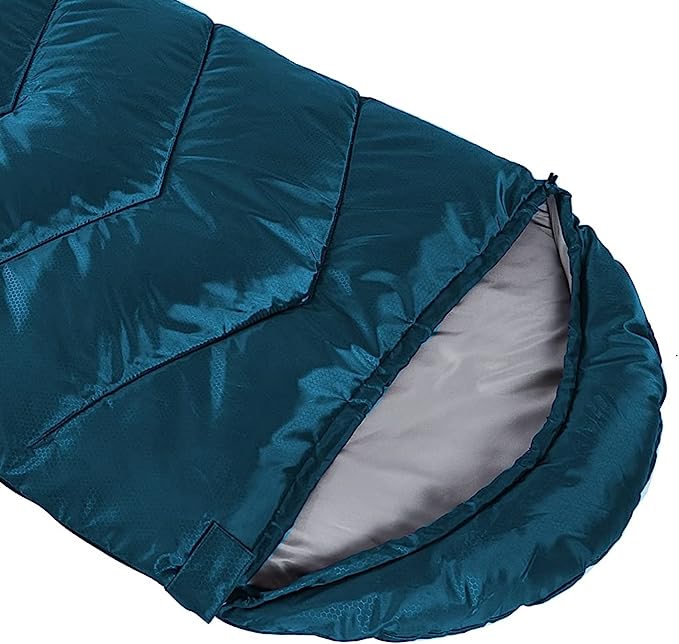If you’re wondering whether a sleeping bag is necessary for camping, particularly in the summer or when backpacking, you’ve come to the right place. Here, we will address all your questions and provide you with the essential information you need to ensure a comfortable and cozy camping experience. Whether you’re a seasoned outdoor enthusiast or a newbie looking to embark on your first camping adventure, we’ve got you covered. So, let’s dive in and discover if a sleeping bag is indeed a must-have item and at what temperature it becomes essential.
Introduction
When it comes to camping, one of the essential items that come to mind is a sleeping bag. But the question arises – is a sleeping bag truly necessary for camping? The answer depends on various factors such as the weather conditions, the type of camping you plan to undertake, and personal preference.
For those planning to camp in colder seasons or regions, a sleeping bag is undoubtedly a necessity. It provides insulation and helps to retain body heat, keeping you warm and comfortable throughout the night. Additionally, a sleeping bag provides a barrier between you and the ground, protecting you from the cold or dampness, which can seep through a regular blanket or mat.
However, when camping in warmer climates or during the summer months, a sleeping bag may not be a mandatory item. In such situations, you can switch to using a lightweight blanket or even a sleeping pad, depending on your preference. These alternatives provide enough comfort while allowing better airflow and preventing overheating.
Do You Need a Sleeping Bag When Camping in the Summer?
When it comes to camping in the summer, one question that often arises is whether or not a sleeping bag is necessary. While sleeping bags are typically associated with colder weather and cooler nights, there are still several reasons why having a sleeping bag can be beneficial even during the summer months.
Firstly, a sleeping bag provides insulation and comfort. Even though the temperatures may be warmer during the summer, the temperature at night can still drop significantly, especially in certain regions. A sleeping bag can help regulate your body heat and keep you warm and cozy throughout the night.
Secondly, a sleeping bag acts as a protective barrier against insects and other critters. While the summer may bring warm weather, it also brings bugs. Having a sleeping bag with a proper closure system, such as a zipper, can help keep those pesky bugs out and provide you with a peaceful night’s sleep.
Do I Need a Sleeping Bag When Backpacking?
When it comes to backpacking, one of the key questions that arises is whether or not a sleeping bag is necessary. As backpacking usually involves spending nights in the great outdoors, having a proper sleeping setup is crucial for a comfortable and restful experience. However, whether you actually need a sleeping bag depends on a few factors.
Firstly, consider the climate and weather conditions of the area where you will be backpacking. If you are backpacking in warmer climates or during the summer months, you might be able to get away without a sleeping bag. In such situations, a lightweight and compact sleeping pad or camping mat may provide enough insulation and comfort for a good night’s sleep.
Secondly, think about the duration of your backpacking trip. If you are planning a shorter trip with mild weather conditions, you may choose to forgo a sleeping bag altogether and opt for a lightweight quilt or blanket. However, for multi-day backpacking trips or trips in colder climates, a sleeping bag designed for the specific temperature range is highly recommended.
Lastly, consider your personal comfort and sleeping preferences. Some people tend to get colder or sleep less comfortably without a sleeping bag, while others might be perfectly fine with alternative options. It’s essential to know your own tolerance to cold and how well you sleep in different conditions before making a decision.
While it is possible to go backpacking without a sleeping bag, it is generally advised to have one, especially for longer trips or colder temperatures. The right sleeping bag can provide the necessary warmth and insulation, ensuring a good night’s sleep in the wilderness. However, if you are backpacking in warmer climates or during the summer, other lightweight alternatives like quilts or blankets, combined with a sleeping pad, can be a viable option as well.
At What Temperature Do I Need a Sleeping Bag?
When it comes to camping and backpacking, one of the most essential pieces of gear to have is a sleeping bag. It provides warmth and comfort during those chilly nights spent in the great outdoors. But at what temperature do you really need a sleeping bag? Let’s explore this topic and find out.
When considering the temperature at which you need a sleeping bag, it’s important to keep in mind that every individual has a different tolerance for cold. Factors such as body weight, metabolism, and personal preference can influence how warm or cold a person feels. However, as a general guideline, it is recommended to use a sleeping bag when the temperature drops below 50°F (10°C).
Using a sleeping bag helps to create a layer of insulation that traps your body heat and keeps you warm throughout the night. It acts as a barrier between you and the cold ground, preventing the loss of body heat. Sleeping bags are typically rated for different temperature ranges, indicating the lowest temperature at which they are designed to keep you warm. For example, a sleeping bag with a temperature rating of 20°F (-6°C) is suitable for colder temperatures compared to one with a rating of 40°F (4°C).
- The insulation material of the sleeping bag also plays a significant role in determining its effectiveness in colder temperatures. There are three main types of insulation used in sleeping bags: down, synthetic, and hybrid. Down insulation, composed of duck or goose feathers, is known for its exceptional warmth-to-weight ratio and superior compressibility. Synthetic insulation, on the other hand, offers better performance in wet conditions as it retains its insulating properties even when damp. Hybrid insulation combines the benefits of both down and synthetic materials.
- In addition to the temperature rating and insulation material, there are a few other factors to consider when choosing a sleeping bag. The shape of the bag, such as mummy or rectangular, can affect its efficiency in retaining heat. A mummy-shaped sleeping bag with a hood provides better insulation by closely contouring to your body and preventing drafts. The length and width of the bag should also be considered to ensure a comfortable fit.
While a sleeping bag is essential for camping in colder temperatures, it is still important to layer your clothing and use additional insulation if needed. Wearing thermal base layers, socks, and a hat can help retain body heat. Using a sleeping pad or mattress underneath your sleeping bag can provide extra insulation and cushioning. It’s always better to be prepared and have a sleeping bag suitable for the expected temperature range.
| Temperature Range | Sleeping Bag Rating |
|---|---|
| 50°F (10°C) and above | 30°F (-1°C) or higher |
| 32°F (0°C) to 50°F (10°C) | 20°F (-6°C) to 30°F (-1°C) |
| Below 32°F (0°C) | 20°F (-6°C) or lower |
In conclusion, having a sleeping bag is essential for camping and backpacking trips, especially when temperatures drop. It provides insulation, warmth, and comfort, ensuring a good night’s sleep in the great outdoors. The temperature at which you need a sleeping bag varies depending on personal tolerance, but as a general guideline, it is advisable to use a sleeping bag when the temperature falls below 50°F (10°C). Choosing the right sleeping bag with an appropriate temperature rating and insulation material is crucial for staying warm and comfortable throughout your outdoor adventures.









